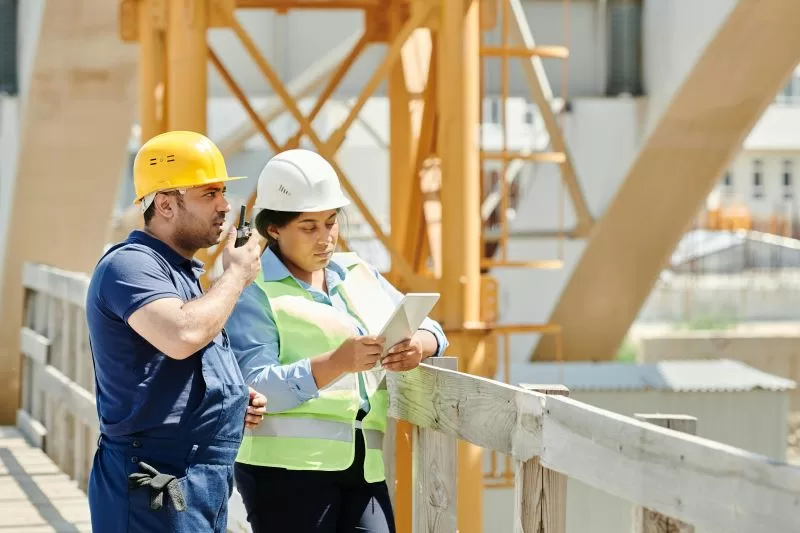In 2024, the US Department of Commerce reported that the share of women in the construction industry has exceeded 14 percent. This sector is a high-paying option for those without bachelor’s degrees.
More women entering this field will also help fill the existing job openings aligned with the rising needs for various construction projects, from homes to commercial establishments.
However, despite some positive signs, construction is discrimination-fraught for many women. The hiring process remains biased, with some firms refusing to recruit female workers outright. Last year, the US Equal Employment Opportunity Commission raised the issue of a Maryland-based staffing company refusing to hire female workers for demolition and labor roles.
Even on the job, many women face unequal treatment at construction sites and have limited access to training opportunities.
Let us identify four concrete actions construction firms can take to stop this discriminatory treatment. It will be advantageous for all stakeholders.
1. Increasing Access to Apprenticeship Programs
A significant barrier stopping women from entering construction roles is a lack of adequate support and training. While this sector has several opportunities for those without college degrees, it requires skill development. Not offering technical training opportunities to women prevents them from applying for these roles.
Moreover, many people land jobs through their training networks since word-of-mouth can play a substantial role in this industry. When women don’t have equal access to apprenticeship programs, their recruitment rates suffer further.
Some progress is visible on this front. In January 2025, the California Department of Industrial Relations declared $13 million in funding to improve opportunities for women and non-binary people. The funds will get channeled through the ERiCA grant for construction apprenticeship.
2. Reviewing Hiring Processes and Communication
Another area construction firms must examine is their recruitment process and the communication around it—aspects that tend to be discriminatory in this sector. For example, job advertisements often use gendered language that excludes women at the very outset.
The Conversation notes that many women migrants in Australia struggle to get shortlisted for interviews in construction. It happens even in the case of a close skill and experience match. If female interviewees do come in, some recruiters treat them as subpar choices.
It does not help that women in leadership positions in construction are few. A 2024 McKinsey report notes that women continue to be underrepresented at various corporate levels, with only 29% making it to the C-suite.
This data necessitates debiasing hiring practices by clarifying the evaluation criteria and training evaluators to encourage diversity. Recruiters should also ensure the use of gender-neutral language while promoting the opening.
3. Offering Health and Childcare Support
A lack of bathroom facilities, the struggle to dispose of feminine hygiene products, and perpetual microaggressions…These are only a few challenges women construction workers face on job sites.
Some female employees complain that they cannot even find PPE that fits properly. Ill-fitting workwear compromises comfort and safety but has been going on long enough. (Recent OSHA guidelines will hopefully improve issues related to PPE for all employees.)
Things get even trickier during life transitions, like pregnancy or switching to a new contraceptive plan. These events can cause symptoms like nausea and reduced focus. The ongoing Depo Provera lawsuit around Pfizer’s contraceptive injection has brought home the severity of these challenges. Many women have experienced brain tumor diagnosis after prolonged use.
TorHoerman Law notes that such unforeseen situations can lead to lost income and reduced earning potential in the future. In such circumstances, an insensitive workplace that does not provide support is likely to face harsh, well-deserved public scrutiny.
Construction firms will do well to implement supportive policies for women facing health issues and transitions like childbirth and menopause. Consider providing access to childcare facilities and flexible work arrangements. The objective is to facilitate men’s and women’s roles as partners in family responsibilities.
4. Implementing an Inclusive Jobsite Culture
Finally, construction companies should examine the workplace’s culture and environment to check its inclusiveness toward diverse people. The culture may seem inclusive and understanding on paper, but the reality may be rife with microaggressions and unfair treatment.
In 2024, the National Association of Women in Construction released an insightful report that reflected this problem. It showed that a staggering 88% of women have faced microaggression at work. It could be a comment on their emotional state or physical capacity.
Either way, such behavior can affect women’s career advancement and mental health. It also contributes to high employee turnover, which impacts business growth and reputation.
Tackling this situation needs systemic changes covering employee training and developing strict policies against workplace discrimination. It also requires leadership focus and attention to listen to people’s concerns and act upon the feedback.
Making the building and construction sector more women-friendly is not merely a social prerogative; it is also an economic one. The increasing needs of housing and commerce require an all-hands-on-deck situation. It makes little sense to ignore a huge chunk of the global population by sidelining women due to ancient gender stereotypes.
More construction firms taking the above-identified actions can set the ball rolling on a more inclusive, more economically sound sector.

